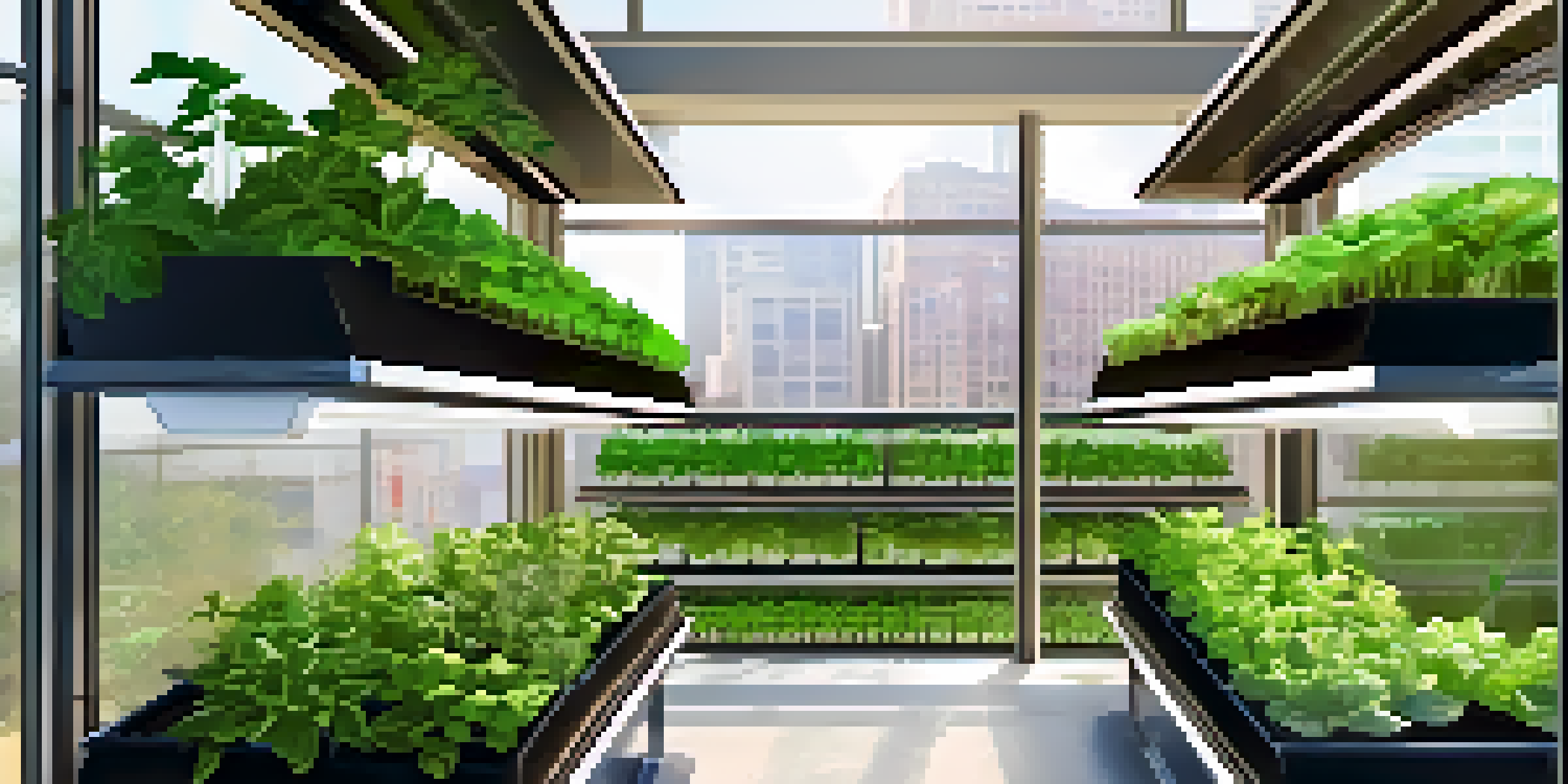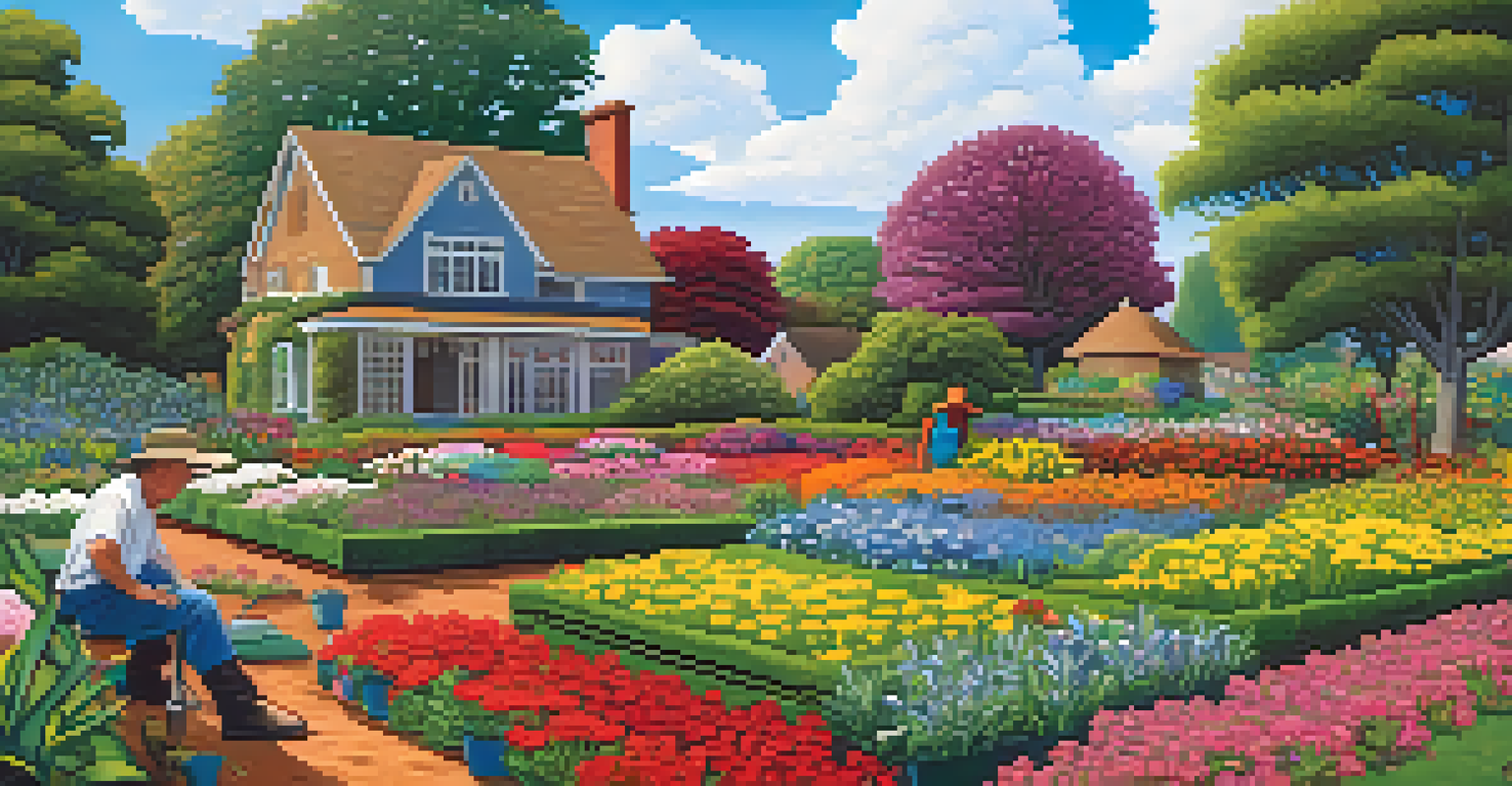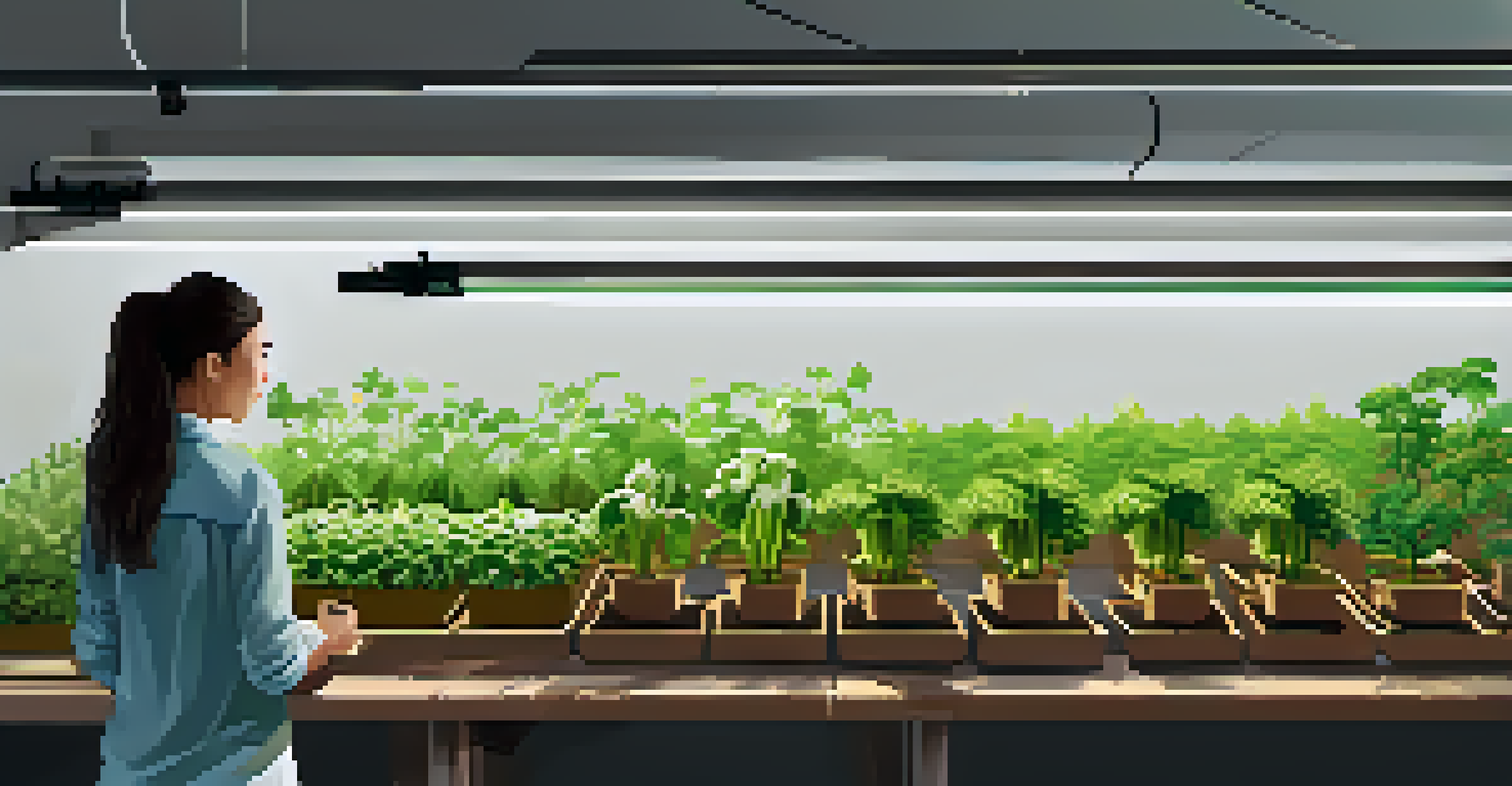Comparing Hydroponics and Traditional Soil Gardening

Understanding Hydroponics: A Soil-less Revolution
Hydroponics is a method of growing plants without soil, using nutrient-rich water instead. This innovative approach allows for faster growth and higher yields compared to traditional gardening. In hydroponics, plants receive all the nutrients they need directly through their roots, which can be a game-changer for urban gardeners or those with limited space.
The best fertilizer is the gardener's shadow.
One of the major benefits of hydroponics is its efficiency. With controlled environments, you can optimize growth conditions, leading to healthier plants. Think of it as giving your plants a tailored diet, where every nutrient can be fine-tuned to their specific needs.
However, hydroponics requires an initial investment in equipment and a bit of learning to manage the system effectively. It may seem daunting at first, but once you get the hang of it, you'll be amazed by how quickly your plants thrive without the constraints of soil.
The Basics of Traditional Soil Gardening
Traditional soil gardening is the age-old practice of planting in earth, a method that's been trusted for centuries. Plants draw nutrients from the soil, which provides a natural habitat for various microorganisms that help with growth. This process fosters a healthy ecosystem that can be incredibly rewarding for gardeners who enjoy getting their hands dirty.

One of the beauties of soil gardening is its simplicity. You don’t need fancy equipment; just some good soil, seeds, and water. Plus, there’s something deeply satisfying about watching a tiny seed grow into a flourishing plant, and it connects you to nature in a very tactile way.
Hydroponics: Fast Growth, High Yields
Hydroponics enables plants to grow up to 25% faster and provides higher yields due to direct nutrient access.
However, soil gardening can come with challenges like pests, diseases, and unpredictable weather. It requires ongoing maintenance, including weeding and soil enrichment, to ensure plants thrive. This hands-on approach can be fulfilling, but it also demands time and effort.
Comparing Growth Rates and Yields
When it comes to growth rates, hydroponics often takes the lead. Plants grown in hydroponic systems can mature up to 25% faster than those in soil. This accelerated growth is due to the direct access to nutrients and water, allowing plants to focus their energy on growing rather than searching for sustenance.
To plant a garden is to believe in tomorrow.
In terms of yield, hydroponics can also outperform traditional gardening. Growers can produce more crops in a smaller space since hydroponic systems can be stacked or arranged vertically. This is particularly advantageous for urban settings where space is limited.
On the flip side, soil gardening can lead to robust plants that may have a richer flavor, owing to the natural complex interactions in the soil. The slower growth can sometimes yield stronger, more resilient plants, showcasing the benefits of a more traditional approach.
Water Usage: Hydroponics vs. Soil Gardening
Water efficiency is one of hydroponics' standout features. Hydroponic systems typically use up to 90% less water than traditional gardening methods, as the water is recirculated and reused. This makes it an attractive option for areas facing water scarcity or for environmentally conscious gardeners.
In contrast, traditional soil gardening can lead to significant water loss through evaporation and runoff. While it can be managed with techniques like mulching and drip irrigation, the water usage tends to be higher overall. Gardeners must be mindful of their watering practices to conserve resources.
Soil Gardening: Simplicity and Flavor
Traditional soil gardening offers a tactile connection to nature and can produce plants with richer flavors.
However, the water used in soil gardening also supports a rich ecosystem, promoting beneficial microorganisms that help plants thrive. This natural balance is something hydroponics lacks, as the controlled environment doesn’t foster the same diversity of life.
Nutrient Management: A Key Differentiator
Nutrient management is a crucial aspect of both methods, but they approach it differently. In hydroponics, nutrients are delivered directly to the plants through the water. This allows for precise control over what plants receive, enabling gardeners to tailor nutrient mixes to specific crops.
Conversely, soil gardeners rely on the natural nutrient content of the soil, which can vary widely. They often need to amend the soil with compost or fertilizers to ensure plants receive adequate nutrients. This can be a bit of trial and error, as soil health and composition can change over time.
While hydroponics offers convenience in nutrient delivery, soil gardening fosters a deeper understanding of plant needs and soil health. This hands-on experience can be invaluable for novice gardeners looking to build a solid foundation in horticulture.
Pest and Disease Management Strategies
Pest management in hydroponics can be simpler due to the controlled environment. Without soil, there are fewer pests to contend with, which can lead to healthier plants. Integrated pest management strategies can be employed, focusing on non-toxic methods like beneficial insects or organic pesticides.
On the other hand, traditional soil gardening often faces challenges from various pests and diseases that thrive in the soil. Gardeners must be vigilant, regularly inspecting plants and soil for signs of trouble. This can lead to a steeper learning curve, as identifying and managing issues requires experience and knowledge.
Cost: Initial Investment vs. Long-term
While hydroponics requires a higher initial setup cost, traditional gardening may incur ongoing expenses that add up over time.
While hydroponics may seem like an easier route, soil gardening offers a rich learning experience in dealing with the natural world. Both methods have their pros and cons, and understanding these can help gardeners choose the best approach for their situation.
Cost Considerations: Initial Investment vs. Long-term Gains
When comparing costs, hydroponics often requires a higher initial investment. Setting up a hydroponic system involves purchasing equipment like pumps, grow lights, and nutrient solutions. While these costs can be daunting, they may be offset by faster growth rates and higher yields over time.
In contrast, traditional gardening is generally more affordable to start. Seeds, soil, and basic tools are often all that’s needed to get going. However, ongoing costs can accumulate through soil amendments, pest control, and water usage, which can add up over the growing season.

Ultimately, the choice between hydroponics and soil gardening may depend on your budget and gardening goals. While hydroponics may offer quicker returns, traditional gardening can provide a more cost-effective and rewarding long-term experience.